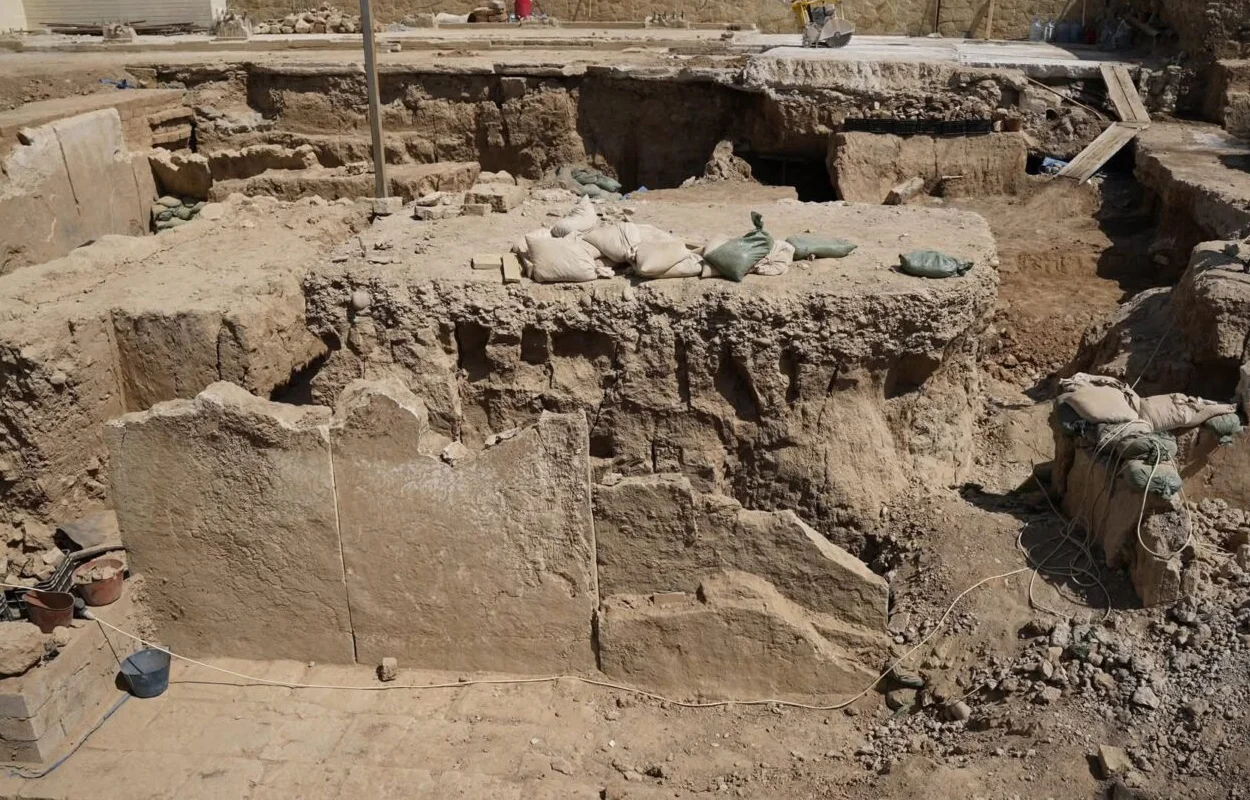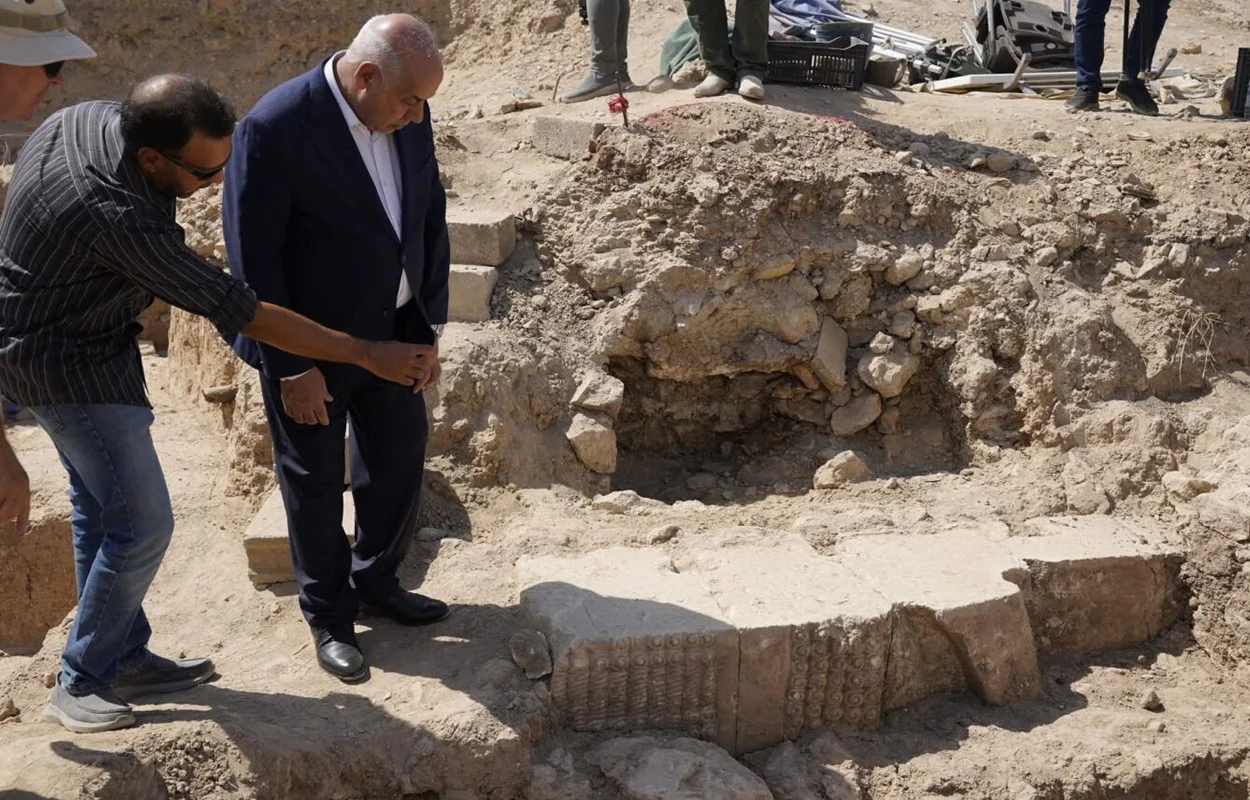Archaeologists have unearthed the remains of what could be the largest known Neo-Assyrian lamassu – a protective deity depicting a winged bull with a human head.
The discovery was made in the ruins of the Assyrian capital of Nineveh in the modern-day city of Mosul, northern Iraq. Within the city walls, the two principal mound ruins are Tell Kuyunjiq and Tell Nabī Yūnus, the latter long revered as the site of a shrine to the prophet Jonah.
It was during the excavations of Tell Nabī Yūnus where the remains of the lamassu was unearthed in the area of the throne room of King Esarhaddon.
Esarhaddon was the third king of the Sargonid dynasty and ruled the Neo-Assyrian Empire from 681 to 669 BC. His reign is most famous for the conquest of Egypt in 671 BC and his reconstruction of Babylon, which was previously destroyed by King Sennacherib.

Iraq’s Minister of Culture, Ahmed Fakkak al-Badrani, explained that the palace was designed with multiple halls leading into the throne room, each protected by lamassu pairs.
According to a press announcement by the Assyrian International News Agency, the lamassu stands at six metres (20 feet) tall, much larger than the examples on display in the British Museum and the Louvre, which range between 3.5 and 4.2 metres.
Excavations have also revealed caches of cuneiform tablets inscribed with texts from Sennacherib, Esarhaddon, and Ashurbanipal, as well as artefacts believed to be war spoils from Egypt and the Levant.
In 2014, Tell Nabi Yunus was destroyed by Islamic State militants, who levelled the site and tunnelled beneath it in search of antiquities to fund their activities. Since 2018, teams from Heidelberg University and Iraq’s State Board of Antiquities and Heritage have been excavating the damaged site, documenting the looting tunnels while preserving what remains of Nineveh’s ancient legacy.
Header Image Credit : AINA
Sources : Assyrian International News Agency





